A single mushroom misidentification can mean the difference between a delicious meal and a trip to the emergency room. Mushroom identification apps promise quick and easy solutions for foragers, which sounds great! It’s especially enticing for beginner foragers. But, their convenience masks serious risks that every mushroom hunter must understand.
Many new foragers turn to mushroom app identifiers as their primary tool. It makes sense because mushroom identification is tricky. Having a handy app that does all the hard work is extremely appealing. However, even the most sophisticated mushroom identification app cannot replace the careful observation, knowledge, and experience required for safe wild mushroom foraging.
Solely relying on technology for mushroom identification puts foragers at risk. Using these apps as a reference or jumping-off point is okay, but never rely on them 100%.
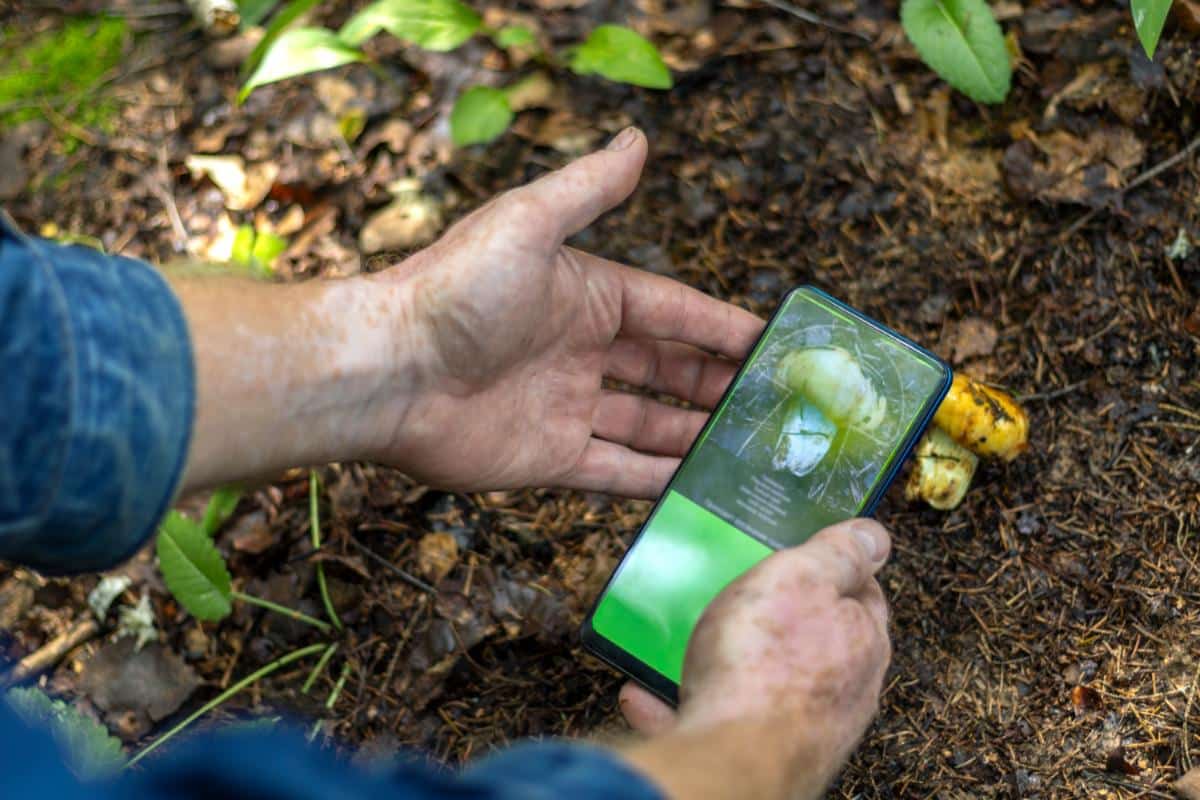
never let convenience override caution
Jump to:
The False Promise of AI Mushroom Apps
Mushroom identification apps offer convenience but create dangerous illusions of expertise. AI-powered mushroom identification apps are correct only about 50% of the time, according to a 2022 Australian study. Most concerning, though, is these apps sometimes misidentify deadly mushrooms as safe to eat.
The consequences of this unreliability are already evident. In Oregon, an entire family was hospitalized after consuming toxic mushrooms that their app incorrectly identified as edible.
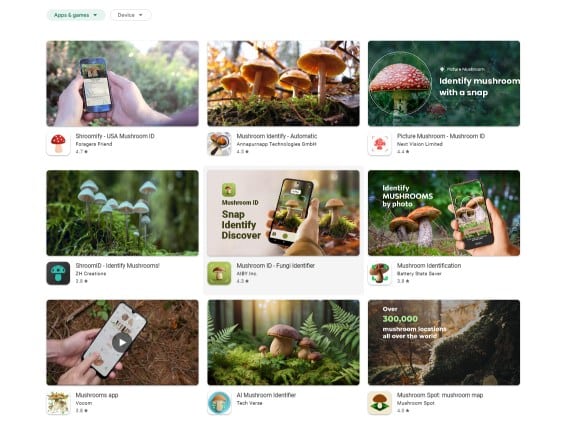
The fundamental limitations of mushroom identification apps include:
- Inability to capture crucial identification features beyond visual appearance
- No consideration for seasonal variations or growing conditions
- Tendency to deliver identifications with unwarranted confidence
- Limited database coverage of local and rare species
To put some of this in perspective, there are over 10,000 mushroom species in North America alone. Some of the physical differences between these are extremely minor to indiscernible to the naked eye. Of course, there are mushroom species that stand out and mushroom identification apps will do a decent job with those. But, due to the sheer number of species and potential for dangerous lookalikes, it’s difficult to rely even on the good IDs because how will you know if it’s accurate or not until you do further research.
One of the biggest issues with AI generated mushroom identification is its sensory limitations. Apps can’t smell or taste and both of these are prime identification keys used by foragers to identify mushrooms. Smell, in particular, is huge. There are mushrooms that smell like maple syrup, dead fish, coconut, almond extract, dirty socks, and cucumber. That’s a huge range of smells! Our noses are an essential part of correct mushroom id.
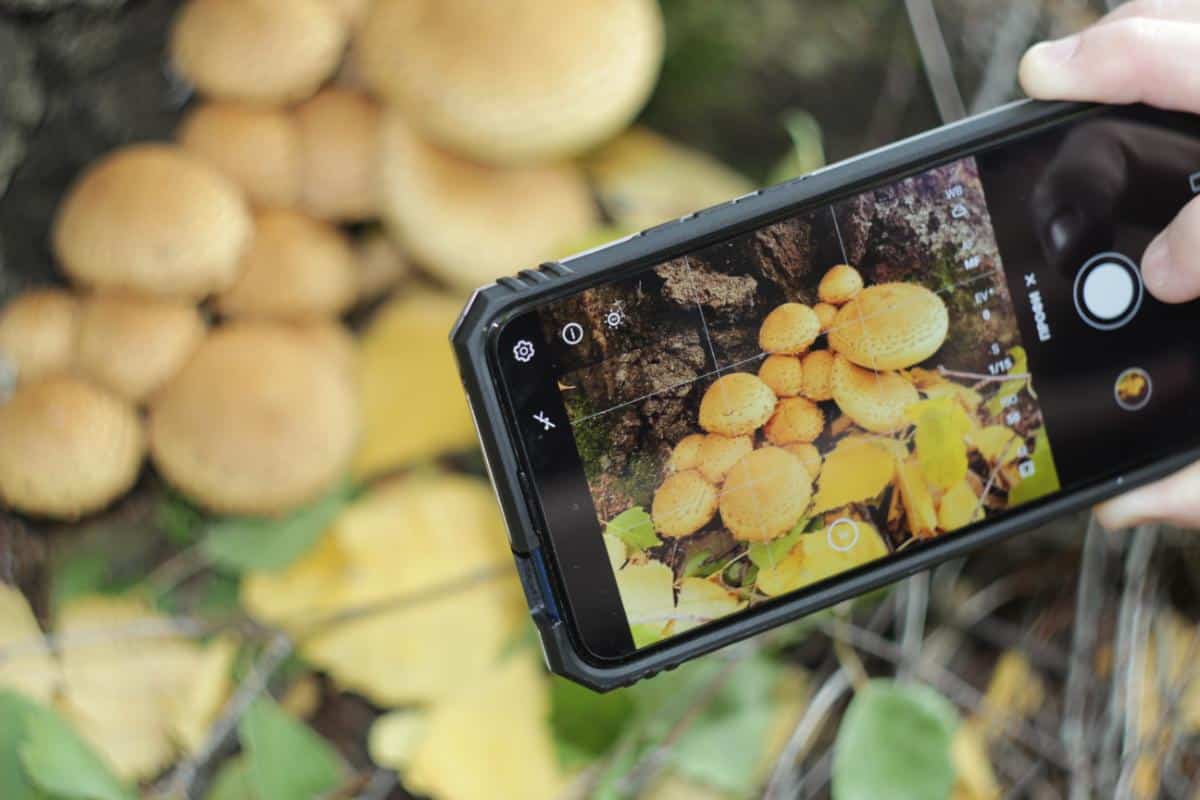
Taste is also a key feature that an app can’t duplicate. A “nibble and spit” test (never swallow the mushroom) can determine is the species is bitter, disgusting, searingly spicy hot, or sweet and mild.
The problem extends beyond mobile apps. In 2023, Amazon was flooded with AI-generated mushroom foraging books containing potentially deadly misinformation. Books generated by AI often look appealing, but once you look under the cover, there is lots of hidden dangers. And, many of these dangers are not ones that will get picked up by beginner foragers. Even major social media sites and search engines have fallen prey to these issues. Facebook (Meta) once provided cooking instructions for a lethal mushroom species! Google also gave cooking instructions for a deadly mushroom. And, Google sometimes displays AI generated images in search results which is another big problem.
The most insidious aspect of mushroom identification apps is their seeming simplicity. The straightforward “snap and identify” approach creates a dangerous false sense of security, particularly for novice foragers. While identifying nearly half of all mushrooms correctly might seem impressive, this success rate paradoxically makes these apps more dangerous. It gives overconfidence to users who don’t understand the gravity of potential misidentification.
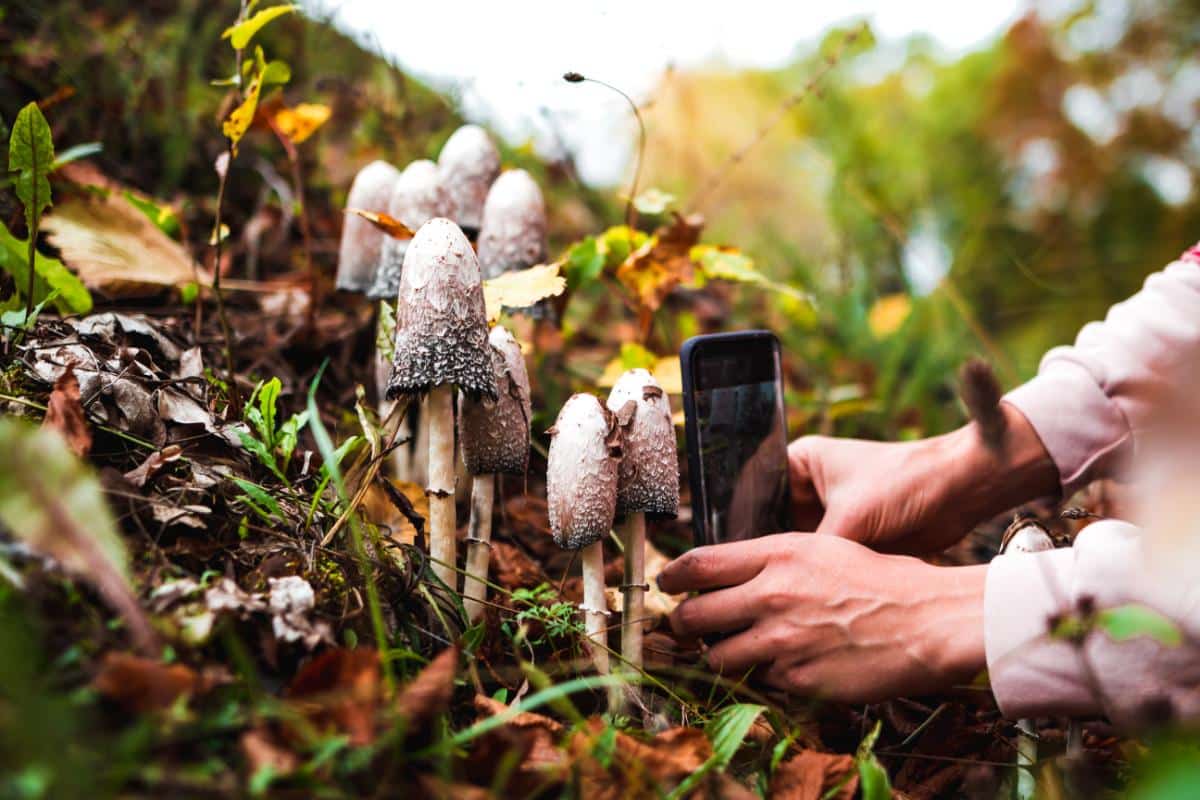
Real-Life Consequences
In 2023 alone, poison control centers received over 7,250 calls about mushroom poisonings. This was an 11% increase from the previous year. These aren’t just numbers; they represent real people facing life-threatening situations.
Recent Statistics:
There were 133,700 mushroom poisonings documented between 1999-2016.
- 700 cases resulted in significant harm
- 52 incidents ended in death
- 25% increase in poison center calls since pre-pandemic levels
Behind these numbers are stories like Bill Hickman’s, who consumed what he thought were safe mushrooms in his backyard. He used an app to verify his find, and then had a delicious dinner. Eight hours later, he was fighting for his life in the hospital. Doctors later confirmed he had eaten four destroying angel mushrooms – just one contains enough toxin to be lethal.
The rise in foraging popularity and overreliance on technology has created a perfect storm. In Ohio alone, poison centers handled over 260 mushroom-related calls in just ten months, with 45% requiring emergency room visits. Even more concerning, those needing the most serious treatment for liver or kidney injuries consistently report using mushroom identification apps as their primary guide.
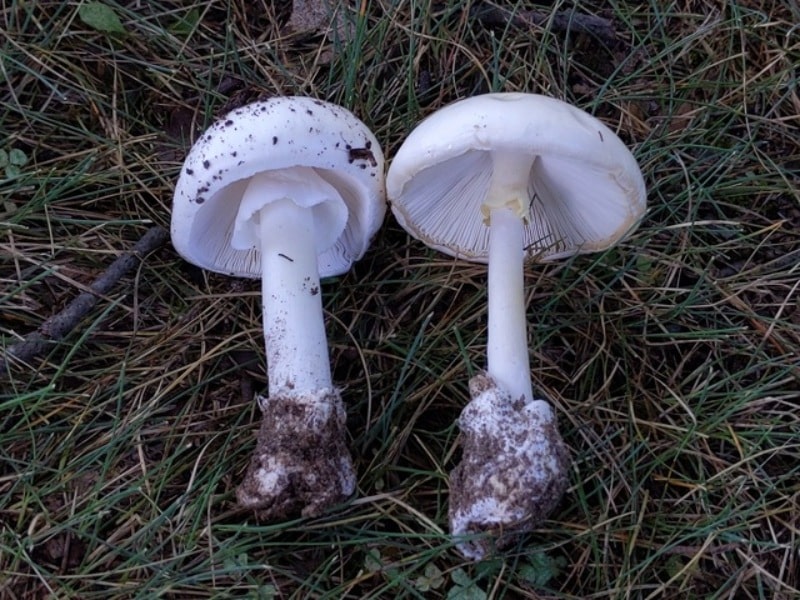
Essential Components of Safe Mushroom ID
Safe mushroom identification requires a methodical approach that goes far beyond simple visual matching. Proper identification involves all your senses and demands careful attention to multiple characteristics that apps simply cannot capture.
The foundation of accurate identification starts with examining these key features:
- Cap characteristics including texture (slimy, dry, scaly)
- Gill or pore structure and attachment to stem
- Stem properties (hollow/solid, texture, base features)
- Color changes when cut or bruised
- Distinctive aromas (like licorice, anise, or onion)
When collecting specimens, always dig out the entire mushroom, including the base. Crucial identifying features might be hidden under the soil. Never rely on a single characteristic for identification! Mushrooms can vary significantly in appearance based on age, weather conditions, and environmental factors.
The color and appearance of mushrooms can change dramatically with moisture levels and age. For instance, many species appear darker when wet and fade as they dry. Some mushrooms show significant color changes in rainy conditions. Remember that proper identification requires examining multiple specimens at different growth stages.
If you are serious about learning how to identify mushrooms, check out our guide How To Be A Successful Mushroom Forager.
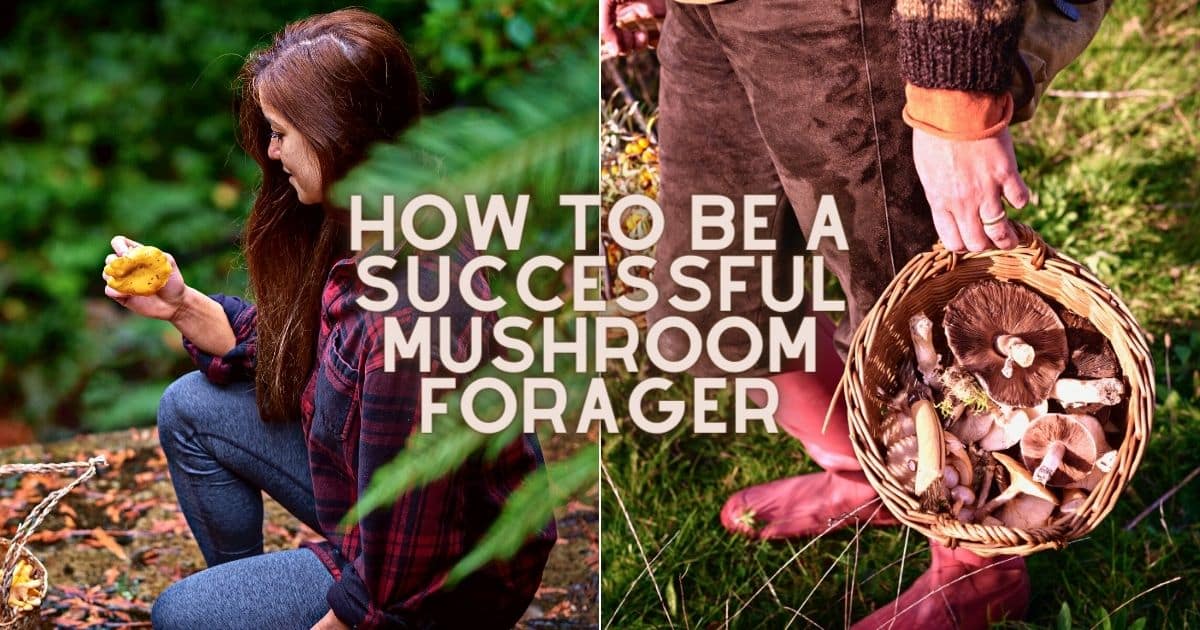
The Importance of Real Foraging Expertise
True mushroom expertise develops over time, with practice in the field and consultation with books and other foragers. It’s a journey of patient learning and hands-on experience. Mastering mushroom identification can be challenging. If you want to be really good at it, you must put the time in. There is no magic quick way to be a good forager.
For those looking for a quick way to learn mushroom foraging, sorry. This isn’t a subject where you can skip the journey to the knowledge. On the plus side, once you learn mushroom identification, you will have a very important and well-earned skill set that not everyone has. Only those that really want to commit to learning will excel in this field.
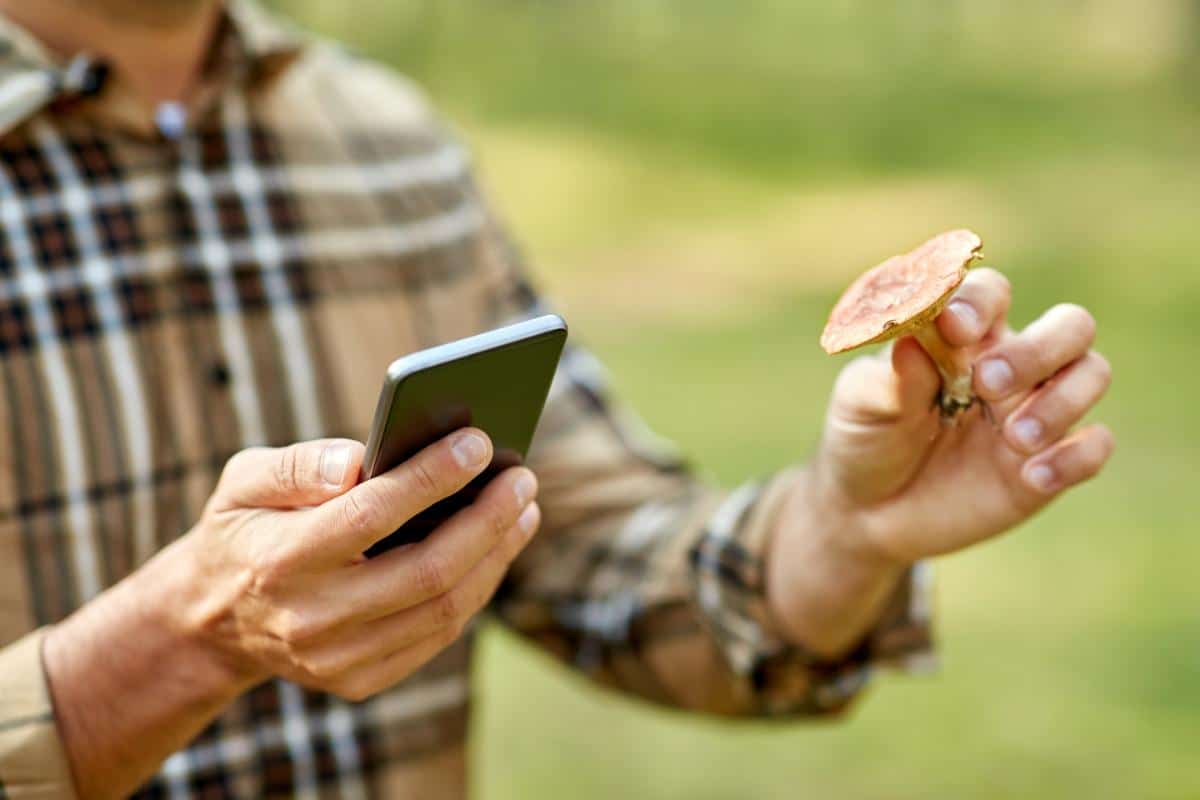
The path to becoming a competent forager starts with building a strong foundation. Rather than attempting to memorize every mushroom species, successful foragers begin with simple, conservative rules that can be applied broadly. These time-tested methods help prevent dangerous mistakes while building confidence.
Essential resources for developing expertise include:
- Local mushroom societies and experienced mentors
- Multiple reliable field guides (not apps or websites — books written by experts in the field. And always google the author to make sure they’re legit! Devious AI book generators like to fabricate author profiles.)
- Hands-on identification workshops
- Structured foraging classes with mycologists
A skilled forager learns where to look based on topology, terrain, and local ecology. They understand that mushroom identification isn’t just about visual matching. You must pay attention to habitat, seasonal patterns, and the complex relationships between fungi and their environment. And it can be extremely complex for some species. Bolete mushrooms, for example, form mycorrhizal relationships with trees. Sometimes, the only way to correctly identify a bolete is to know the tree species (and even then, it may not be enough!).
Remember that expertise comes gradually. Start by mastering a few common species in your area. Cross-reference multiple sources and consult with experienced foragers. This systematic approach is slower than relying on apps but builds a solid foundation for safe, successful foraging.
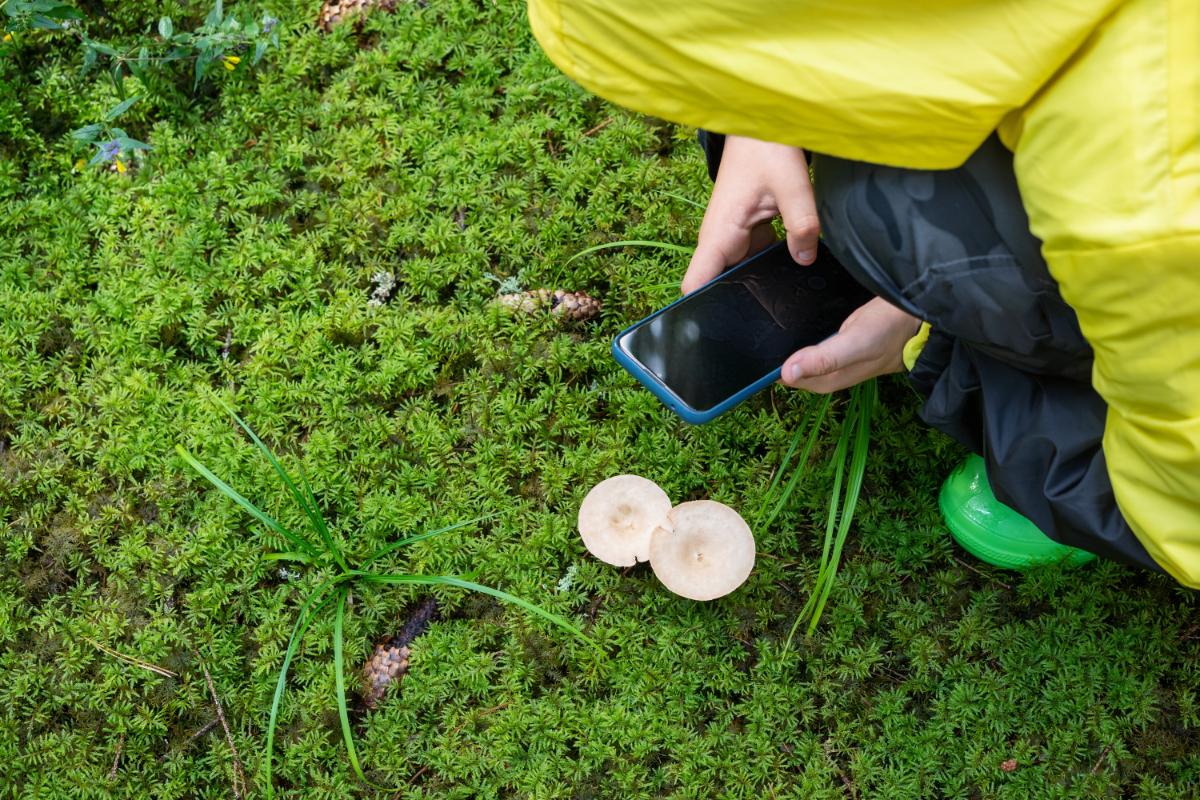
Technology’s Proper Role in Foraging
Mushroom identification apps can play a valuable supporting role in your foraging journey. The key lies in understanding how and when to use these digital resources effectively.
Think of mushroom apps as field notebooks rather than definitive guides. They excel at:
- Documenting your finds with photos and notes
- Learning basic mushroom terminology
- Building initial pattern recognition skills
The right way to use technology involves multiple layers of verification. When you find an interesting specimen, take detailed photos and notes in your preferred app. Then, cross-reference your findings with at least two reliable field guides and consult local expert resources.
Remember that even the best mushroom identification app has limitations. Many require internet connectivity, which isn’t always available in remote foraging locations. Their databases may not include regional varieties. And the image recognition can easily be affected by lighting conditions or mushroom age.
Instead of relying solely on technology, use it to enhance your traditional learning methods. Take photos to discuss with experienced foragers, document seasonal patterns, and build your own digital archive of verified finds. This approach combines the convenience of modern tools with time-tested identification practices.
The 50% accuracy rate of mushroom identification apps might seem impressive, yet this partial reliability makes them more hazardous by building false confidence. Proper mushroom identification demands careful observation, extensive knowledge, and respect for time-tested identification methods.
Remember that each mushroom encounter represents a potentially life-or-death decision. Successful foragers understand this gravity and approach identification with patience, thoroughness, and humility. They know that true expertise comes from dedicated learning and practical experience, not quick technological solutions.
The path to safe mushroom foraging starts with accepting that there are no shortcuts. Build your knowledge gradually, verify identifications through multiple sources, and never let convenience override caution. Your life – or someone else’s – may depend on it.
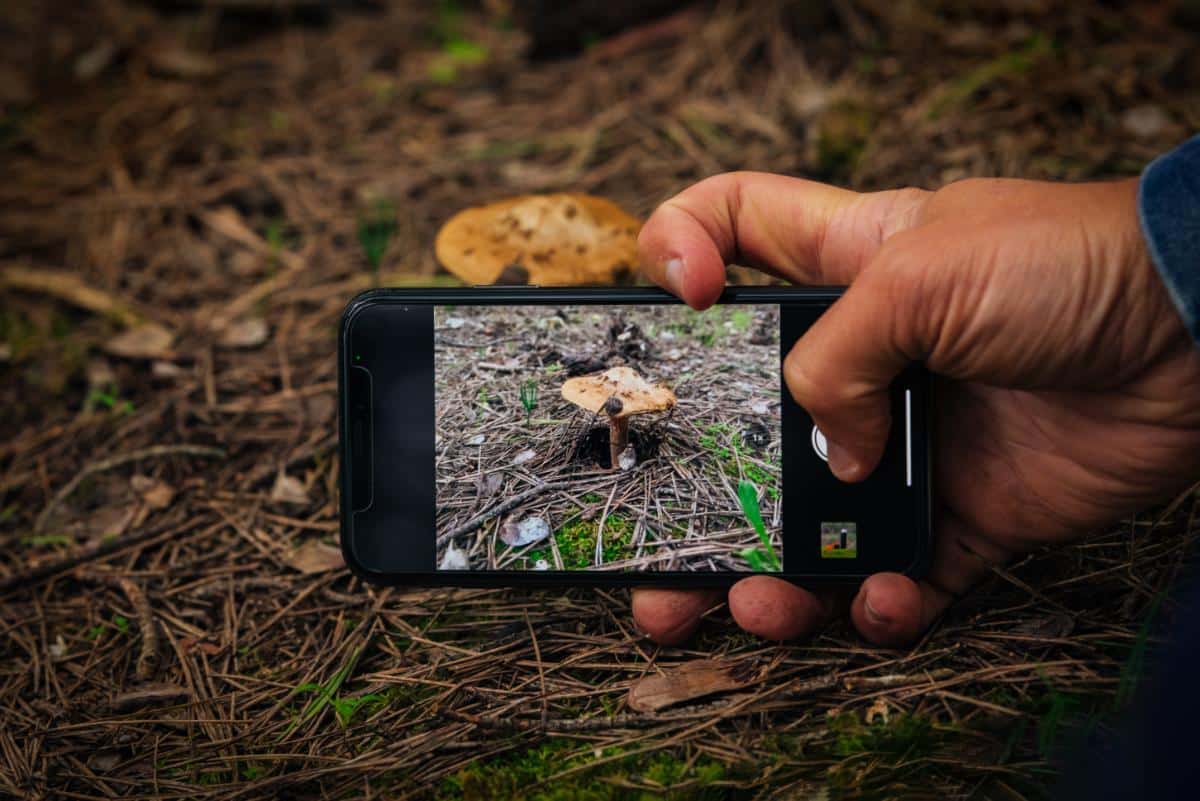
Common Questions About Mushroom Identification Apps
How reliable are mushroom identification apps?
Mushroom identification apps can be quite reliable, but they’re not infallible. Most apps use advanced AI and machine learning algorithms to analyze photos and identify mushrooms. And, they can do this with a good degree of accuracy.
However, it’s crucial to use them as a starting point rather than a definitive guide. This is especially true if you’re thinking of eating the mushroom. Apps have about 50% accuracy which is not nearly enough for determining edibility of a species.
How do mushroom identification apps work?
Mushroom identification apps typically use image recognition technology combined with machine AI learning. You snap a photo of the mushroom, and the app compares it to a vast database of mushroom images. It then provides potential matches based on visual characteristics like cap shape, color, and gill structure. Unfortunately, just visual characteristics are usually not enough to properly ID a mushroom.
Are mushroom identification apps suitable for beginners in mushroom foraging?
Yes, with caveats. These apps can be excellent learning tools for beginners. They introduce you to the vast world of fungi and help you start recognizing common species. However, beginners should use them alongside other learning resources. The apps average 50% accuracy which is not reliable enough to depend on for determining the edibility or toxicity of mushroom species.

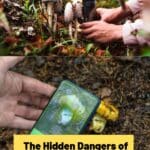
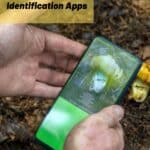
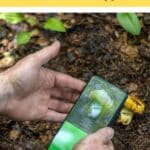
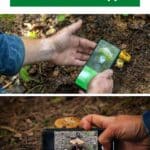
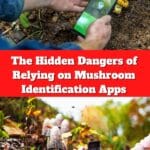
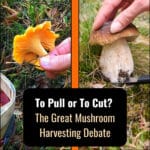
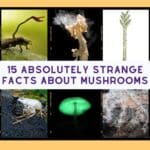
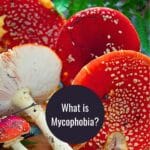

Leave a Reply